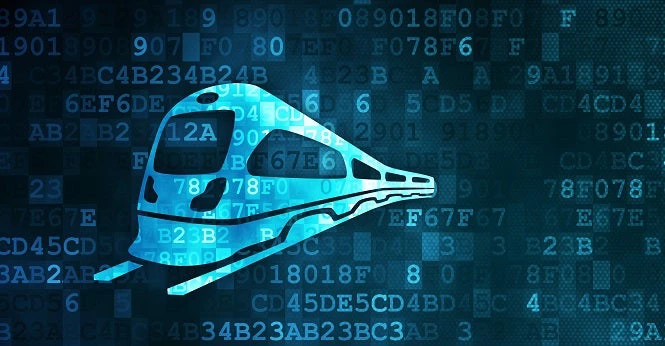
At the same time, railways are in the midst of a profound transformation, driven by emerging digital technologies like 5G, big data, the Internet of Things, automation, artificial intelligence, and blockchain. On a recent study tour in China, I had the chance to learn more about these developments, and to reflect on how digitization may help the rail industry reinvent itself.
It is hard to overstate the impact of digitization on the railway sector. In fact, digital technology is disrupting pretty much every component of railway operations:
- Rolling stock. Advances in automation, self-diagnosing, or real-time geolocation tracking mean that trains are becoming considerably smarter and safer.
- Control and signaling systems: digital systems can radically enhance the reliability and performance of operations. From an infrastructure/asset management standpoint, they also eliminate the need for outdated railway signal boxes and heavy copper wires.
- Railway infrastructure. Internet of things sensors and devices are opening new possibilities for obstacle and damage detection, preventive maintenance, linkages with other systems, Government agencies, logistics providers, and transport modes.
- Revolutionary communications (5G, LTE), and cloud infrastructure (backend) will offer attractive solutions for handling large volumes of data and avoiding bulky rail-side infrastructure
- Faster self-learning algorithms in Enterprise Asset Management (EAM) systems make for more efficient dispatching, routing, and maintenance scheduling.
- Smart monitoring and surveillance systems are changing the way operators manage hazards, intrusions, railway crossings, and driver behavior.
- Performance. Automated and predictive systems will lead to fewer delays and breakdowns, optimized dispatching, routing and scheduling, increased capacity with trains running closer together, lower costs, and more.
- Competitiveness. Digital solutions can substantially improve journey times, reliability, cost recovery, traceability, and coordination with other modes—all of which will increase the competitive edge and the modal share of freight rail.
- Increased efficiency, less red tape, and lower transaction costs, especially with the integration of blockchain into rail operations. Russian and Kazakh railways are already looking into blockchain to streamline operations and reduce paperwork. IBM and Maersk have implemented successful pilots as well, and major universities around the world are conducting research on blockchain applications in the railway sector.
- Improvements in safety and security thanks to track obstacle detection, intrusion detection, and other similar systems that are allowing railways to address various types of risks in a smarter, more systematic way.
- Smaller environmental footprint. By optimizing train operations and giving rail a competitive edge over both road and air transport, digitization is poised to lower the climate impact of logistics.
The World Bank is well positioned to accompany government agencies, railway operators, and other key stakeholders as they navigate these changes. In the rail sector, harnessing the full potential of technology will require locally relevant solutions, drawing from the experiences of others, and careful decision-making. But one thing is for sure: at a time when digital solutions are transforming almost every industry, railways simply can’t afford to be left behind.
Learn more on broader aspects of rail freight beyond the digital front: The Rail Freight Challenge for Emerging Economies: How to Regain Modal Share.



Join the Conversation